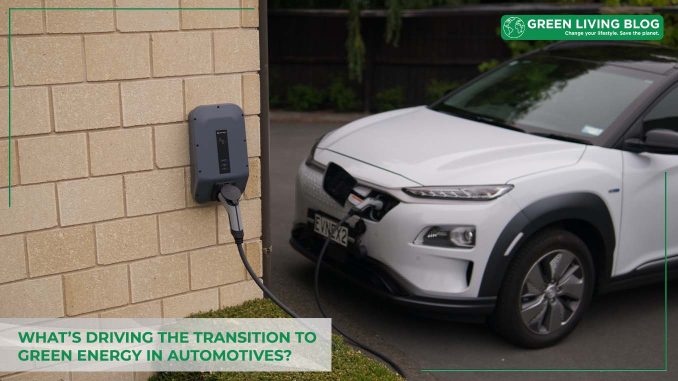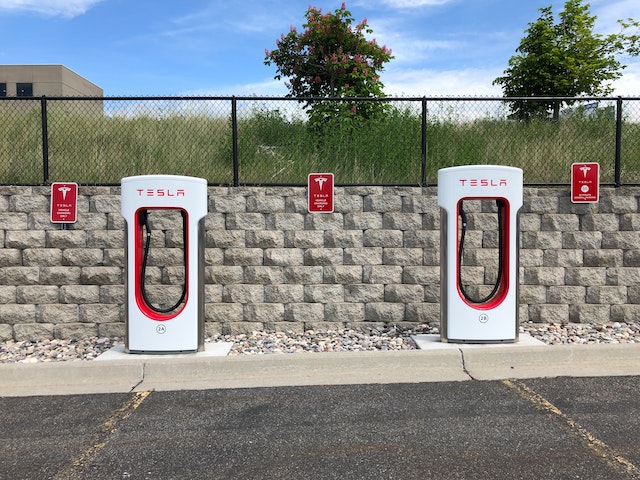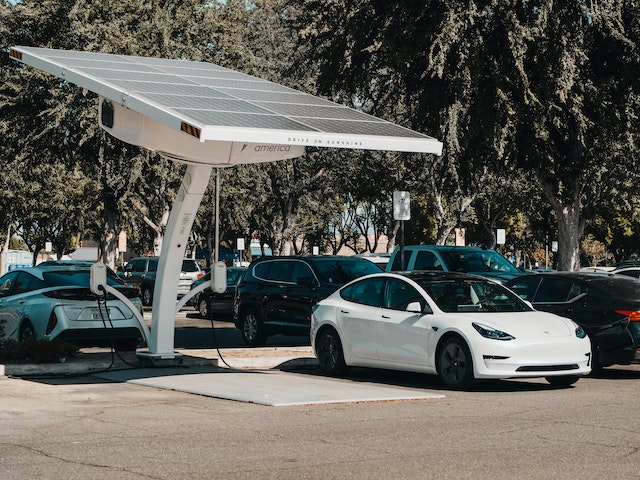
While hybrid and electric vehicles are considered the future of the global automotive industry, these types of cars are already beginning to take over and dominate the marketplace.
For example, pioneering car brand Ford expects to have spent $5 billion in 2022 on electric vehicles, while General Motors (GM) revealed that it will spend $35 billion in total of EVs and battery technology through 2025.
But what’s driving this transition, and are these vehicles really better for consumers and the environment?
The Main Drivers of the Transition to EVs

There are several trends driving the transition to EVs in 2022, and we’ve outlined a few of these below:
- #1. Government Targets and Guidelines: From the seminal 2015 Paris Agreement and Climate Accord to recent events COP26 and COP27, governments and commercial leaders around the world have continued to reinforce their commitment to reducing carbon emissions and achieving ‘Net Zero’ across the board while improving their ESG performance. These targets and subsequent guidelines are impacting businesses directly, with automotive brands required to invest more in cleaner energy and hybrid cars or EVs.
- #2. Consumer Demand and Behaviour: Consumer demand for EVs and sustainable vehicles has also increased markedly of late, with this also driven by government initiatives, advertising and the impact of climate change as has been observed on a global scale. There’s undoubtedly increased interest in low emission transportation among consumers, and this will translate into a higher demand for more efficient vehicles.
- #3. The Reputation of Brands Like Ford: With respected brands like Ford and GM now leading the transition to EVs, customers are starting to trust the vehicles being produced on the market also from newcomers like Tesla. This is doing much to correct the impact of the Volkswagen violation of the Clean Air Act for more than a decade, when they embedded defeat devices in 11 million cars. Now, there’s far greater transparency in the market, and customers can see the strides taken by big automotive brands in this field.
Are These Vehicles Really Better for Customers?

While EVs are considered to be more expensive than diesel and petrol cars, they can drive considerably lower fuel costs over time.
So, there are pros and cons from a customer perspective, although it should be noted that EVs typically require considerably less maintenance overall. However, there’s still a minimum interim car service required for EVs, to keep these roadworthy.
From an environmental perspective, EVs are definitely better than cars powered by fossil fuels, especially from the perspective of emissions and the drive to create better air quality in the UK. They’re also more environmentally friendly in terms of noise pollution, since they’re considerably more quiet than diesel and petrol cars.
EVs (and even hybrids) certainly sound less polluting when in use, with these significant environmental benefits compensating for the slight inconvenience of electric vehicles and the ease with which they can be charged. EVs however take much longer to charge up, with a full charge likely to take between four and 20 hours depending on the model in question. It may also be worth checking which car manufacturers offer customer loyalty programmes for the automotive industry and compare them.
Weigh your options when purchasing a new car, but the EV movement seems unstoppable so it’s best to opt for a vehicle that is equipped for a greener future.
![]()
Author Profile

- Eco Warrior by day, Eco Blogger by night trying to get the eco balance right.
Latest entries
 Green LivingJune 30, 2025Herbal Tea for Insomnia: Your Guide to Natural, Sustainable Sleep Solutions
Green LivingJune 30, 2025Herbal Tea for Insomnia: Your Guide to Natural, Sustainable Sleep Solutions EnvironmentJune 24, 2025What are the most energy-efficient Home Upgrades in 2025?
EnvironmentJune 24, 2025What are the most energy-efficient Home Upgrades in 2025? EnvironmentJune 23, 2025Eco-Friendly Paper Straws: A Small Switch That Speaks Volumes for your Brand
EnvironmentJune 23, 2025Eco-Friendly Paper Straws: A Small Switch That Speaks Volumes for your Brand Green Expert GuidesJune 9, 2025How does Wind Turbine Component Replacement work?
Green Expert GuidesJune 9, 2025How does Wind Turbine Component Replacement work?





Leave a Reply
You must be logged in to post a comment.